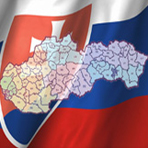Schengen Information System
Freedom of movement in the Schengen Area is not connected only to legal regulations but also to information systems which help to provide exchanging important information necessary for determined authorities and subjects responsible mainly for safety, protection of public order, persons and property. One of such information systems is the Schengen Information System (SIS). This information system is one of the main compensation measures to ensure safety and public order on the territory of the member states of the common Schengen Area and is one of the major pre-requisites for abolishing controls on internal borders.
The SIS enables members of safety units of the member states to acquire access to data entered in the SIS by any member state and related to the search for persons and objects, and in particular cases to provide appropriate response to such entries – e.g. to prevent a person, whose entrance in the Schengen Area has been prohibited in one country, from entering the Schengen Area in another one, or, on the contrary, to arrest a wanted person trying to leave the Schengen Area, to search for missing person, lost or stolen objects. The SIS is not only used at border crossing points of the Schengen Area countries, but helps revealing criminal activities within the inland, too.
The Schengen Information System contains the following categories of entries for the purpose of: - arresting persons and handing them over to relevant authorities of the requesting state (Article 26 of the SIS II Decision); - expelling persons from the Schengen Area (Article 24 of the SIS II Regulation); - discovering missing persons (Article 32 of the SIS II Decision); - identifying a place where a wanted person is staying for judicial authorities (Article 34 of the SIS II Decision); - discrete or specific control of persons or vehicles (Article 36 of the SIS II Decision); - seizing lost, stolen, invalidated or misappropriated objects (Article 38 of the SIS II Decision).
Data is entered to the SIS by each member state; then it is accessible on-line to each of the countries involved. SIS only contains those categories of data which is necessary for police and customs units in relation to checks of persons and objects, for judicial authorities and for authorities in charge of issuing residence permits or visas. These authorities use the information and data from the Schengen Information System to fulfil their tasks and subsequently they adopt relevant measures against persons or objects which are subjects of the searches.
In relation to this, each member state has established a SIRENE office responsible for the quality of national data processed by the SIS, and at the same time it represents a special unit providing the exchange of supplementary information to entries in the SIS among individual member states. The SIRENE office is also competent in the area of personal data protection and deals with the issues of rights of data subjects whose personal data is recorded in the SIS records.
A historical reason for establishing the SIS was the need to make all data on missing or wanted persons and objects, or persons whose entrance in the EU is to be denied, available directly and efficiently to all safety units of member states involved. The SIS started to be built in 1988 when first ideas appeared about the necessity of a common information system which would contain police information from each member state. The original technical concept was determined for 12 member states of the EU. Later it has changed into SIS 1+ which could include 18 countries at most.
In the course of 2000 first ideas about a further development and increase of efficiency of the SIS started to appear, as in that form it was not able to provide its services to more than 18 countries, so a concept to develop a second generation of this system (SIS II) has been approved. It involves broad technical and technological changes which will have impact on its data structure and provide several new functionalities. Due to objective facts and different obstacles the development of the system, it is constantly behind the original schedule of its construction. As a result of the delay, the Council of the European Union decided in December 2006 that a version of the so-called SISone4all was to be made, a solution provided by Portugal, which in September 2007 enabled the accessing countries to join SIS 1+. It concerned 9 member states which joined the EU on 1st May 2004. The Slovak Republic is also one of the countries using the access to SIS by means of the SISone4all version. Cyprus is an exception, not planning to join until the SIS II. Currently the SIS database is used by 30 countries.
| Documents for download | |
| SIS II Info leaflets in various languages (16,2 MB) | |











